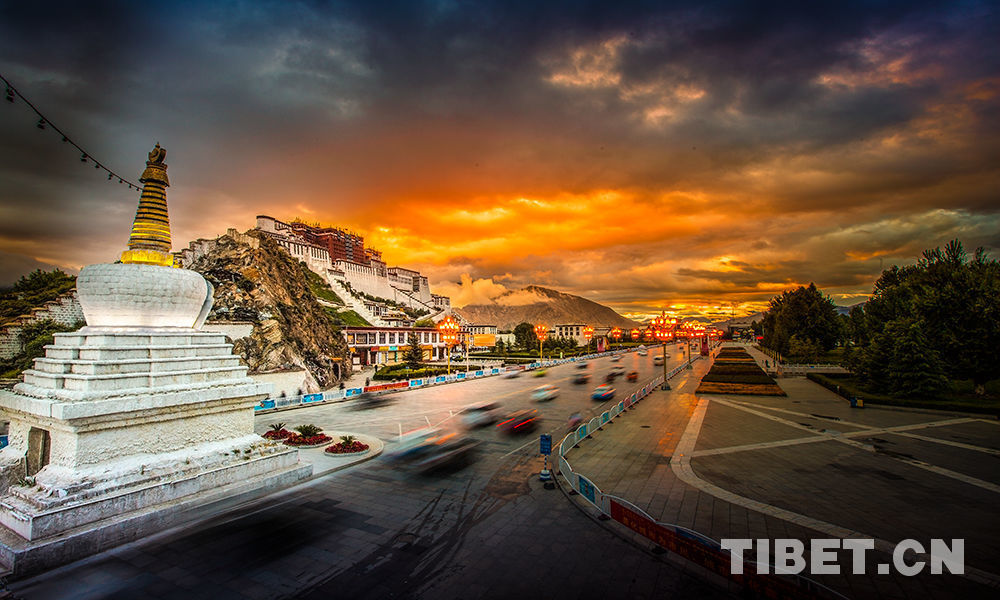Nation-state: does it fit in Tibet?
The "Tibet independence” is a buzzword in the world today. Despite the rhetoric spread around by some monk, it is deeply rooted in the nation-state concept prevalent in the European countries during the 19th century. For centuries, the exotic concept has been a dominant standard for Western countries to judge the relationship between inland China and Tibet. However, this view does not fit in the historical pattern of ties between different ethnic groups in China. It is time for Westerners to think twice about their view on Tibet.
Suzerainty: root of double Tibet policy of Western countries
Although all Western countries recognize Tibet as a part of China, they also support “Tibet’s separation from China” in the name of autonomy. This phenomenon was originated from the blurred concept of Suzerainty transplanted from European colonies to Asian countries.
From the 19th to 20th century, the Britain and other Western powers regarded Tibet as China’s “Suzerainty”, a special term referring to the relationship between the Osman Empire and its neighboring states during the 16th and 17th centuries. However, it was a tributary relationship between China and Tibet from the Yuan Dynasty (1271-1368 AD) to the Qing Dynasty (1644-1911 AD), which was quite different from Suzerainty.
The biggest contrast between a Suzerainty and a Tributary State lies in that Suzerainty specifies a relationship between industrialized countries and agricultural countries with a strong economic dependence on the former by the latter, whereas a Tributary State never demanded this mandatory division of labor and the metropolitan state’s economy did not depend on the tributes paid by its vassal state.
It were Britain and other Western powers who imposed the term “Suzerainty” on China and forced its central government in the Qing Dynasty to give up its "Suzerainty” of its neighboring areas by signing unequal treaties in order to integrate them into their own sphere of control.
In fact, the above all derived from the translation equaling Suzeranity to Tributary or vassal states, which guided the Tibet policies of major Western countries including the United States and Britain. It is obvious that the concept of Suzerainty has been stylized, ignoring the historical distinction between Suzerainty in Europe and Tributary States in Asia.
Based on this concept, it is not difficult to understand why Tibet should become “a region with high-degree autonomy”under the auspice of Britian at the Simla Conference between October 1913 and July 1914, as well as the reconfirmation of British Foreign Affairs Ministry that “Tibet was not a part of China, but an independent country in 1950.” In other word, since 1914, Britain had accepted the fact that “Tibet had the right to interact with other countries as an independent state.”
It is his double-dealing policy that Western countries’ recognition of Tibet as part of China will not affect their support for“Tibet’s separatism”, and that Western leaders recently met with the Dalai Lama frequently without taking China’s opposition into consideration.
After the Lhasa Riots on March 14, 2008, Irish writer Fred Halliday wrote in his book Open Democracy that sovereignty should not totally depend on history, rather, it should depend more on international recognition. “Even if Tibet was a part of China centuries ago, it should not deprive its right of seeking independence.” His view that the formation of a sovereign state depends more on international recognition than completely on history is reasonable in a sense, but without the instigation of Western hemogism, and without the backup of the Western public opinion, the Independence Movement will not arise in Tibet in the early 20th century.
Here we may ask again why Western countries officially recognize Tibet as part of China, but in the meanwhile sympathize with “Tibet’s independence”?
First, Westerners’ mindset of nationalism, especially the view of Tibet in this context played an important role in this regard.
Since the 19th century, the entire world had been reorganized into the sovereign system of nation-state. According to Ernest Gellner, a British-Czech philosopher, political and nationalist states should be identical. In other word, nationalism is a theory, which demands the national boundary not go beyond the ethnic and language boundaries. This theory became prevalent in the name of Willsonism, which was in favor of intervention to further national self-interest.
In fact, multiethnic countries were very common in post-War Europe. And in the post-Cold War era, the system of international relations was restructured based on the advocacy for democracy, human rights or identity of religious culture. But many rebellions were multiethnic or cross-ethnic movements. However, the widespread historical existence of multiethnic societies could not influence the prevalence of the “nation-state” principle in Europe. For some nationalist or hegemony forces, the homogeneity of nation and state was still the best excuse. When it overlapped with the disparity in religious belief, it will easily trigger antagonism between different nationalities followed by tragedies in many parts of the world such as India and Pakistan.
In the modern times, China must be the only nation which retains the early 20th-century territory and population structure. But it is not a kingdom in the Qing dynasty any more, rather it is a sovereign state. For many Westerners, however, it remains a problem on how to describe such a multi-ethnic, multi-religious and multi-civilized trans-systematic society.
The biggest challenge for them is to understand the integration of the cultural boundary with the political boundary within a community. And the best way to evade such an embarrassment is to give a “proper” description of China. In their opinion, China can be a civilization, a continent, or an empire, but never a “normal nation state” or “modern country”, in which “normal” and “modern” are both standards set by Westerners’. Based on this standard, a polity must be centered on a nation, while the multi-ethnic or even multi-civilized comprehensive society evolved over a long period has been regarded as “man-made or mandatory”.
The aftermath was that the traditional pattern of ties between Tibet and inland China in the Qing Dynasty were loosened due to the weak government in face of aggressions by Western powers, resulting in separation of Tibet from inland China initiated by Tibet’s upper class. The United States not only instigated the Dalai clique to propose the “Tibet issue” after the “17-Article Agreement” was signed in 1951, but also assisted the Dalai Lama to launch the armed rebellion in 1959. Hence the “Tibet issue” became more internationalized.
It is worth notice that the governance over Tibet by China’s central government had never outdone the scope of religious and tributary relations between Tibet and inland China in the Yuan, Ming and Qing dynasties from the 13th to early 20th centuries. The relations in this period rested on the Tibet’s political, military and economic dependence on inland China. On top of that, the consistency of this relationship also benefited from a set of elastic tributary system established in the forms of religion, ritual and so on. This dynamic ties, regardless of closer ones in the Yuan and Qing, or looser ones in the Ming Dynasty should not be defined by the concepty of unification and separation in the nationalism era. However, when a sovereign system was set up as a standard of international relations, the central-local ties based on the traditional tributary relationship had to be fundamentally shifted.
Given the above, the issue of “Tibet independence” was originated from the Western mind-set of nation-state, which has never conformed to the historical facts in China. Therefore, Westerners should think twice on their customary theory of nation and state when judging the relationship between Tibet and inland China.
Your Comment
Name E-mailRelated News
-
;











